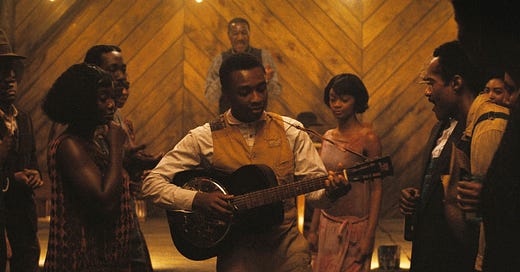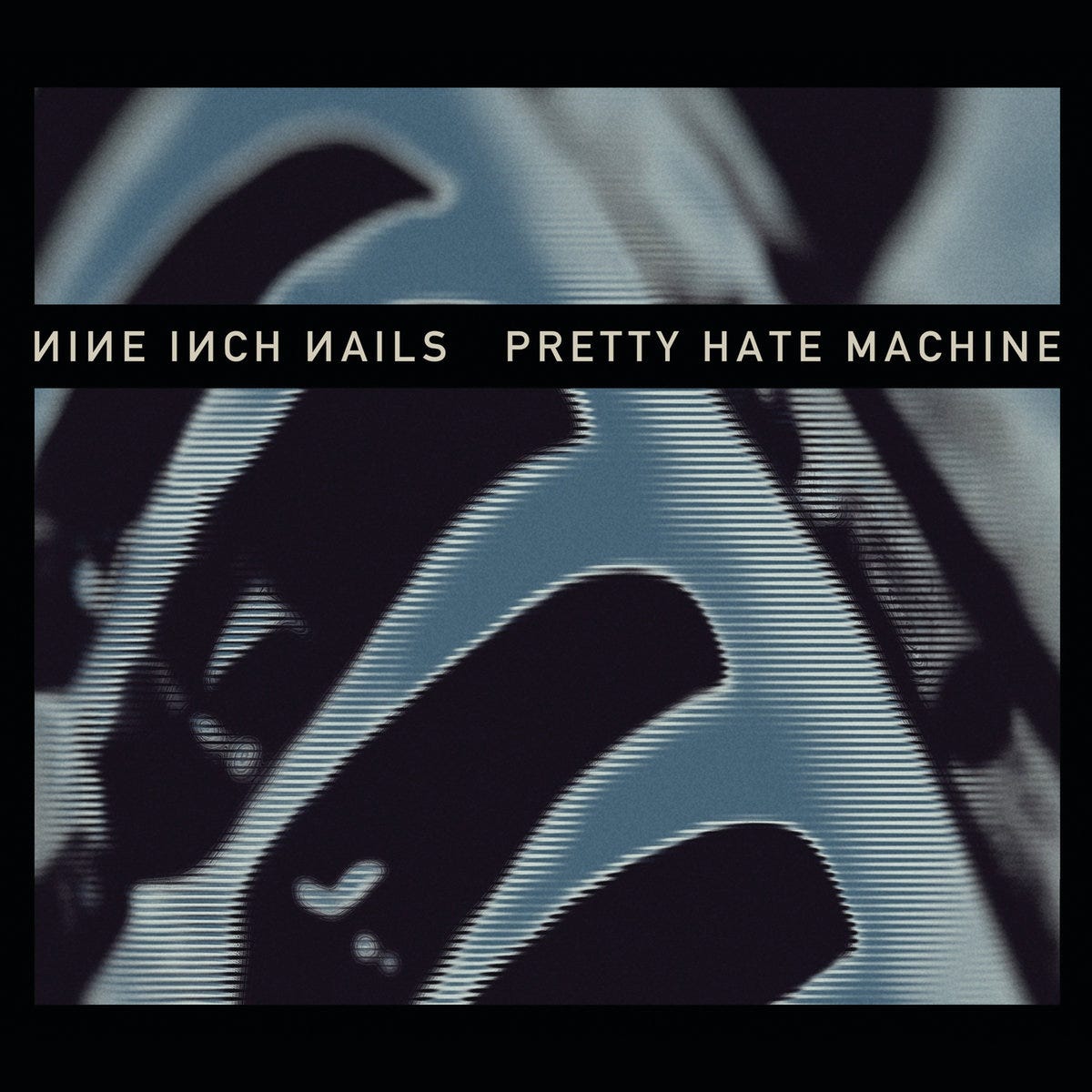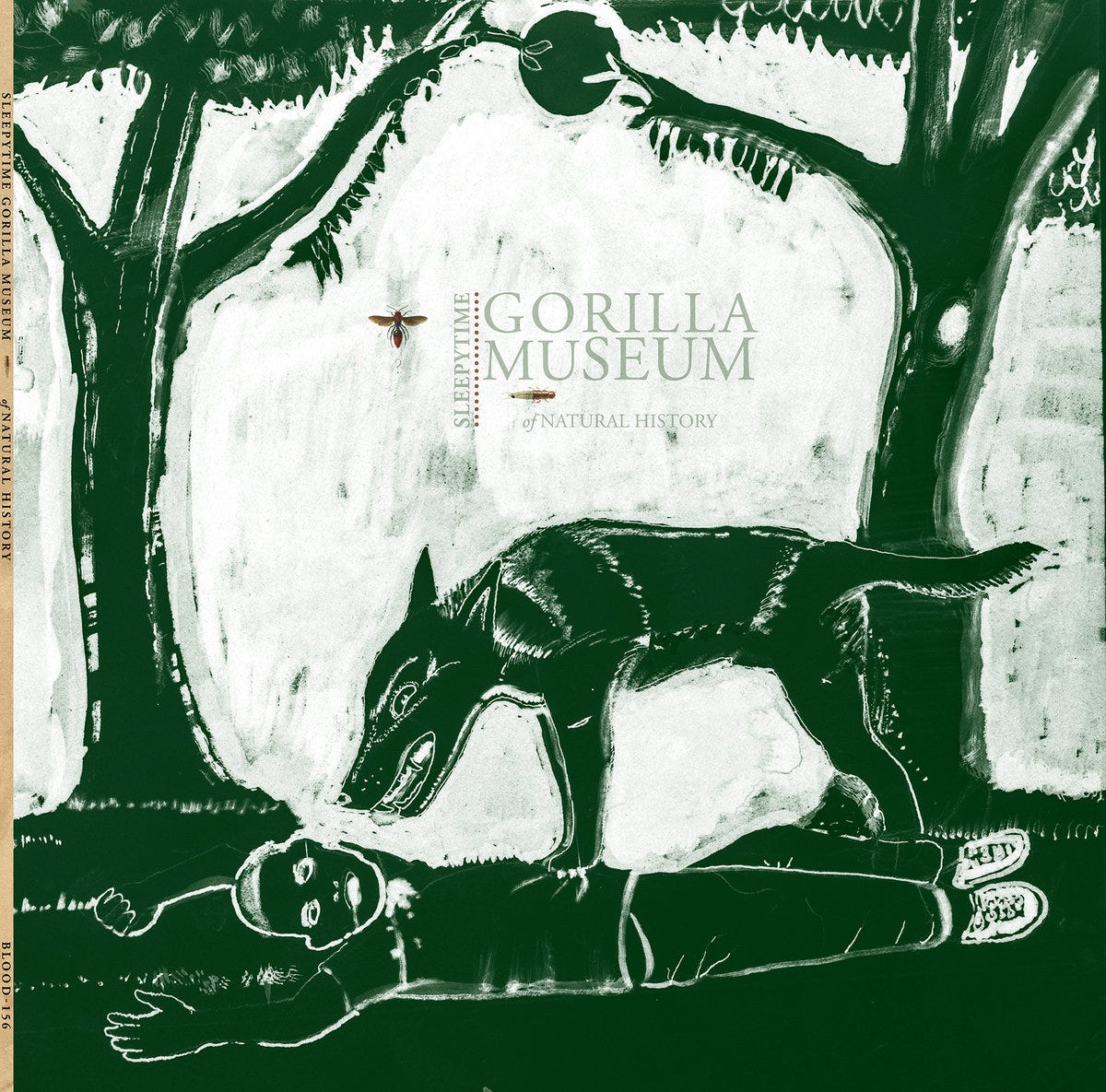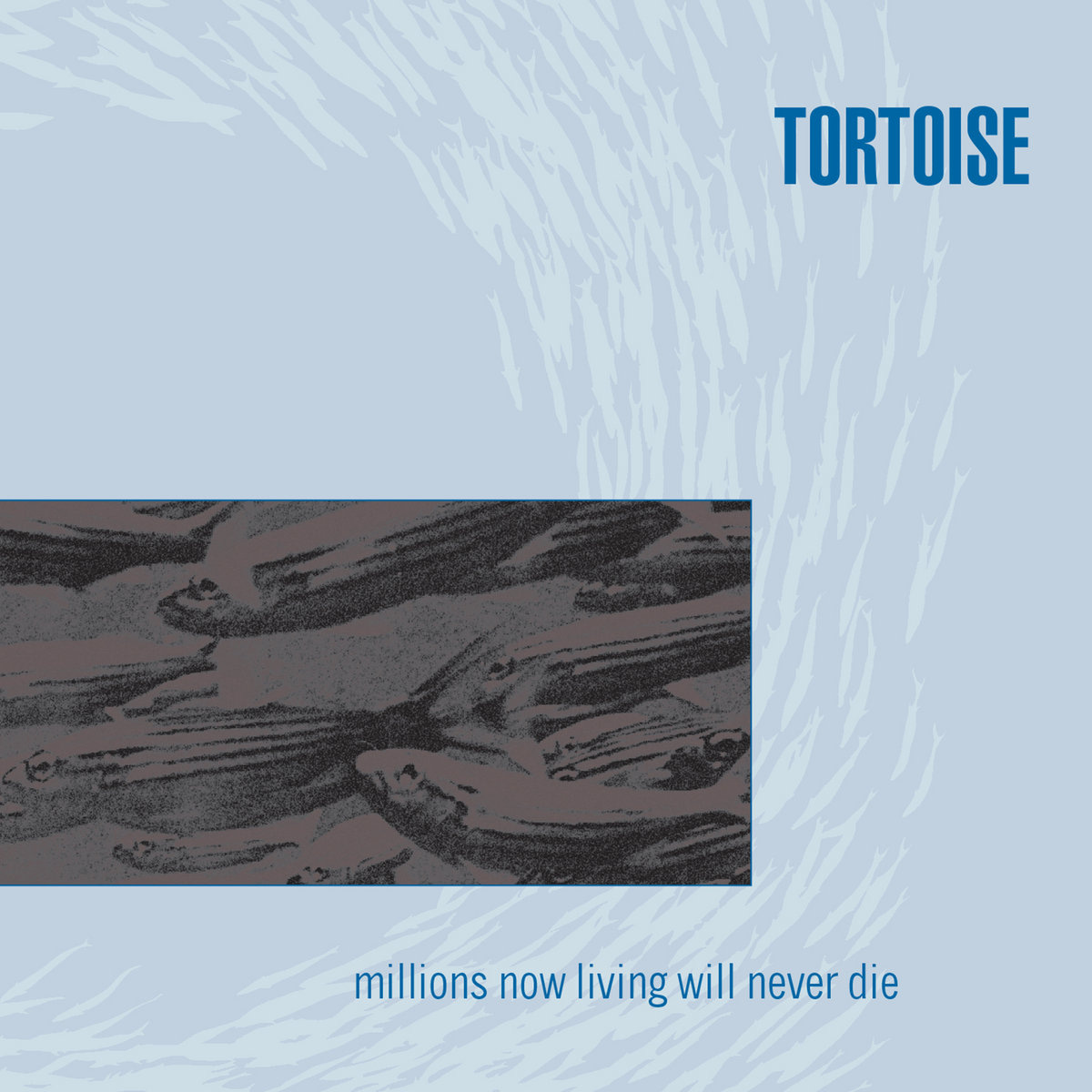Since moving to Chicago I haven’t had many chances to go to the movies. Between coordinating schedules with ~*My Girlfriend*~ and the demands of the dog it is much easier to settle in for a night of television than it is to organize a trip out to one of the neighborhoods that has a theater. I’m not complaining, mind you. I’m glad I finally got a chance to catch up on the shows that I missed as a single guy. I’m just saying that we’ve had to choose our outings carefully when it comes to the big screen. Last weekend we chose correctly. This is not an advertisement, but you must see Sinners. If actual advertising is to be believed, you probably already have. It’s the number one word of mouth movie in America, or something to that effect.
Sinners’ success does not surprise me. It is a true something-for-everyone crowd pleaser. It has good jokes, great music, raunchy sex, period detail, bloody gory vampire violence, Michael B. Jordan in a three piece suit *and* Michael B. Jordan in a tank top looking as hot as the lead he’s pumping into klansmen. Sinners doesn’t just have great musical performances, it’s also filled to the brim with ideas about music itself. As a thematically rich thriller with wide appeal I’d put Sinners in the same league as Parasite. But as a movie about music it belongs in the same hallowed tier as Tár.
If you’ve heard anything about Sinners other than the presence of blood-sucking monsters and a multiplied Michael B. Jordan, it likely concerns the show-starting and show-stopping performance by newcomer Miles Caton, staring as Sammie “Preacher Boy” Moore. After tailing around with the Jordans as they assemble the talent and supplies necessary to put on their new venue’s opening night, Moore is urged up on stage once the sun sets and the party starts in earnest. Up to this point we’ve only seen Moore’s talent in flashes, enough to know that he’s got some serious pipes but not enough to know that he can rise to the occasion of a packed house. Caton/Moore quickly whisks all doubt away. He introduces himself as the son of a preacher and starts to sing that despite his father’s warnings he *loves* the blues. As his song builds steam the crowd around him stomps the floor on the back beat, turning the entire dance floor into a giant communal percussion instrument. The scene has a two-fold pleasure, first of seeing Moore’s dreams of blues stardom come true before his eyes and second, watching the audience get bowled over one bar at a time until they’re completely under his spell.
Then comes the real magic trick. A voiceover from the opening of the film reminds us that some musicians have the power to summon spirits from both the past and the future. The camera spins to reveal African dancers in ceremonial garb interspersed among the crowd. Then a 70s glam rocker appears next to Caton, shredding righteously between his lyrics. A DJ scratches on vinyl on the stage as b-boys spin in the front row. West coast G-funk whines out from a side room. In short, the whole history of African American popular music shows up to the party playing alongside and through Sammie’s song. His performance exists as part of an unbroken line from the ancient past to the far off future. And as it reaches its feverish peak, it also attracts the attention of three pale faced vampires with open ears and hungry eyes.
This scene feels like the movie in miniature and is arguably the best of Coogler’s young career. Coogler has a knack for making grown men cry going as far back at least as Creed and he hasn’t lost his touch. I spent most of the scene choked up. I was in awe of the technical marvel, the illusion of the single shot, but also gobsmacked by the poetic implications. In this one sequence Coogler makes two compelling musical arguments. First, that when it comes to American popular music it’s all the blues and always has been. From the lonesome harmonica player to the bombastic heavy metal of Ludwig Göransson’s excellent as usual score, all of it belongs to the same tradition, the same feeling. Second, the potency of this ur-genre makes it irresistible to vultures, devils, and opportunists ready to “pick poor robin clean”.
Both of these suggestions made me think about Daphne A. Brooks’s Liner Notes For The Revolution, a door-stopper of an academic text that I worked through at the start of the year. Brooks spends the first half of Revolution detailing the way that blues and jazz musicians, women in particular for her purposes but the broad strokes are gender non-specific, use live performance as a way of evoking “the archive”, quoting and interpolating old songs and by doing so reviving them out of the past. These performances are a continuation of a tradition, but also a commentary on it, a kind of criticism through practice. Sinners gives a legible representation of Brooks’ heady concept. Preacher Boy’s song is a visual library pointing listeners to the tradition that birthed it and foreshadowing future variations to come. In the second half of the book Brooks tackles the difficult history of what happens when those performances are recorded and turned into commodities. Here’s where the vamps arrive. Sinners’ vampire bears a passing resemblance to a number of figures that appear in this half of Liner Notes. He’s a predatory record label, exchanging a few coins for publishing rights. He’s the conniving record collector, chasing down rarities to add to his horde with no care for the roll this music played in the lives of his marks. He’s the American melting pot, maybe even Coogler’s old bosses at Disney, happily throwing everything from Irish river dance to Chinese pillow talk into the fire for its own sustenance.
The presence of these figures seems inevitable as moths heading flame-ward. Maybe I’m getting old, but I appreciated Coogler’s willingness to paint music as a legit dangerous path in life. Everything he says here is true, it does attract devils, it does wear you down, you are surrounded by hustlers, gangsters, and lowlifes. This vision of the music industry even with its supernatural and sensationalized horror feels more honest to me these days than say, Almost Famous, which we watched at home recently. I’m more skeptical than ever at the way rock history gets sanitized, nostalgized, and re-sold. Better the confrontation between father and son that opens and closes the film: this may cost your soul if it means this much to you, but if it means that much to you maybe it’s worth it.
~ ~ ~ ~ ~ Listening Diary ~ ~ ~ ~ ~
Listen to this year’s running diary on Apple Music.
“Wild Animals” by Liv.e (Girl in the Half Pearl, 2023)
I don’t remember how this record by the Dallas, TX based R&B singer Liv.e ended up on my queue, but I’m glad it did. This is one of the more conventional cuts, though it is no less entertaining for its accessibility.
“Desolation Valley/Waves” by Nektar (A Tab in the Ocean, 1972)
I’ve said it before, but we have a surplus of incredible prog rock and jazz fusion records deep enough to last humanity through the rest of the 21st century dating entirely from the years 1972 and 1973. There’s a lot to love here, but I’m particularly fond of the cascading guitar and bass lines roughly two-thirds of the way in that builds back up to the song’s main theme.
“Changeling” by Changeling (Changeling, 2025)
Changeling are the latest in a lineage of German technical death metal bands that dates back at least to late 90s arrival of the wildly influential band Necrophagist. Just as Obscura spun off from a Necrophagist sideman, so have Obscura birthed Changeling. Though the absurd technical ability and meticulous “neo-classical” composition style have endured to the third generation, Changeling add some impressive new wrinkles to the tradition. Chief among them is the use of fretless guitar. I don’t know why you don’t see more of those in metal, the expressive possibilities are mind boggling. Also, these lyrics ain’t half bad!
“Cryonic Suspension May Save Your Life” by Vanishing Twin (The Age of Immunology, 2019)
Shouts out to Ryan from Ferrn for pointing me to this record. Stereolab are the obvious point of reference, but this track shows a down n’ dirty level of groove that I don’t often hear from them.
“PI State of Mind II” by Bambu (If You See Someone Stealing Food… No You Didn’t, 2024)
Shouts out to the Open Mike Eagle YouTube channel/Twitch show for putting me on to this guy. Not often you get a history lesson about the Philippines when listening to rap music. I appreciate the riff on the old Nas song, too.
\ \ \ \ \ Micro Reviews / / / / /
Here are five micro reviews of albums from my vast Rate Your Music catalog. Long time Lamniformes Instagram followers will recognize these from my stories, however they’ve been re-edited and spruced up with links so that you can actually hear the music instead of just taking my word for it.
The Inevitable Rise And Liberation Of… by Saul Williams (2007) - Rap
An album length collaboration with NIN’s Trent Reznor, and an early experiment in the “pay what you want” model of digital distribution. I wonder if Williams and Reznor are still friends. I hope so. It’s a fruitful pairing. Reznor gets to try more conventional rap production (“Scared Money”) and Williams gets to go full rock star (“Convict Colony”) in equal measure. If your primary complaint with NIN is that the lyrics suck, this is the record for you. Williams’ work here isn’t as activism forward as you’d expect from his current online presence. Instead the main theme is about expressing the fullness of your identity in the face of restrictive social/media expectations. Feels very late 00s in a lot of ways. This is a fascinating precursor to the “industrial rap” that took the internet by storm in the 2010s, but you never hear it discussed alongside jpegmafia/clipping/death grips etc. I suspect that the lyrics are too sincerely “conscious” i.e. not irony-poisoned/web-addled, while the music is in typical Reznor fashion just as tuneful as it is abrasive. The U2 cover that is better than it has any right to be. Underrated as heck.
Pretty Hate Machine by Nine Inch Nails (1989) - Industrial
I got into Nine Inch Nails through their guitar-heavy stuff, so as a teen I found Reznor’s synth-pop flavored late 80s debut a little too “cheesy” outside of the obvious hits like “Head Like A Hole” and “Terrible Lie”. As I’ve gotten older my tune has changed significantly. Maybe it’s just because the club-forward Challengers score is still fresh in my mind, but these days I think this album, not the burning fury of Broken, is the real Nine Inch Nails. Everything interesting about Reznor’s work, the pop instincts, the studio-rat perfectionism, the complicated relationship to power, the religious guilt and dread, it’s all in here. If the rest of the NIN discography is dedicated to “finding out”, Pretty Hate Machine is strictly in Reznor’s “fucking around” phase. The perfect midway point between Skinny Puppy and Pet Shop Boys: sickly, sour, and sweet in equal measure.
An Anthology of Dead Ends by Botch (2002) - Metalcore
Easily overlooked, existing as it does in the shadow of We Are The Romans, this short EP is none-the-less a critical part of Botch’s brief discography. When I saw Botch during their reunion run they played nearly all of this, which suggests to me that Botch still considers this to be their final statement rather than a footnote. You can see why. The Botch formula, their systematic approach to polyrhythms, the off-kilter approach to riffs, all powered by their roots in mosh-friendly hardcore, was never tighter than it was on this EP. They were so finely tuned that they could even apply that formula outside of their usual hardcore sound, like on the nearly slowcore “Afghamistam” What I mean by systematic is that unlike other mathcore bands that throw tons of changing meters and rhythms at you, Botch pick one idea per song and work through the variations methodically. This makes their songs hooky and memorable even at their heaviest. This also feels like the most PNW-centric Botch release, though I wouldn’t say it’s brimming with hometown pride. A great bite-sized release from one of my favorite bands.
Of Natural History by Sleepytime Gorilla Museum (2004) - Progressive Rock
As I’ve said in these reviews before, I had no idea what to make of Sleepytime Gorilla Museum as a teen metalhead. I enjoyed listening to them but that enjoyment came from being perplexed, surprised, and befuddled by what I was hearing. Though I wouldn’t have claimed to understand it, I considered this record my favorite of theirs back in the day. Returning to it as an adult this band is a whole lot more legible. Don’t get me wrong it’s still out there as heck, but it’s nowhere near as obtuse as I remembered. On the contrary, SGM are very upfront with what they’re about. It’s just that what they are about is some wacked out Satanic-Unabomber leftism set to demented carnival metal. The whole aesthetic here feels deliberately “outsider”, but I suspect there are some composition degrees and maybe some half-finished philosophy PhDs in the mix. This is very studied, considered stuff. All sorts of wild rhythmic tricks, idiosyncratic orchestrations, and melodies that ride right up to the edge of atonality. It’s definitely a lot, and I wouldn’t be surprised if the theatricality of it all put people off. But if you can match its freak halfway there’s a lot to appreciate in this singular 00s record.
Millions Now Living Will Never Die by Tortoise (1996) - Post-Rock
This is another album that went a little over my head when I first heard it in high school. Listening to Tortoise was an aspiration to a more sophisticated taste in music than I had. Every time I’ve returned to this record armed with fresh knowledge gleaned from what I’d listened to in the interim I find more to appreciate. I think it helps that as I’ve gotten older Tortoise’s muted emotional affect appeals to me more than the cinematic “crescendo-core” I preferred in high school. I remember being completely thrown by the 20-minute opener “Djed” as a teen. Why didn’t it “go anywhere”? Instead of relying on big dynamic shifts (quiet-LOUD, etc) Tortoise go all in on texture and rhythm. This album is ruled by percussion (drums included) and bass. With grooves this thick why would you want to go anywhere? Such an incredible range of styles on display: dub, krautrock, practically jazz fusion on “Glass Museum”, etc. It’s not so much “post-rock” as “post-genre”. It’s not the kind of album that gets your blood pumping, but it makes the world a more interesting sounding place.









